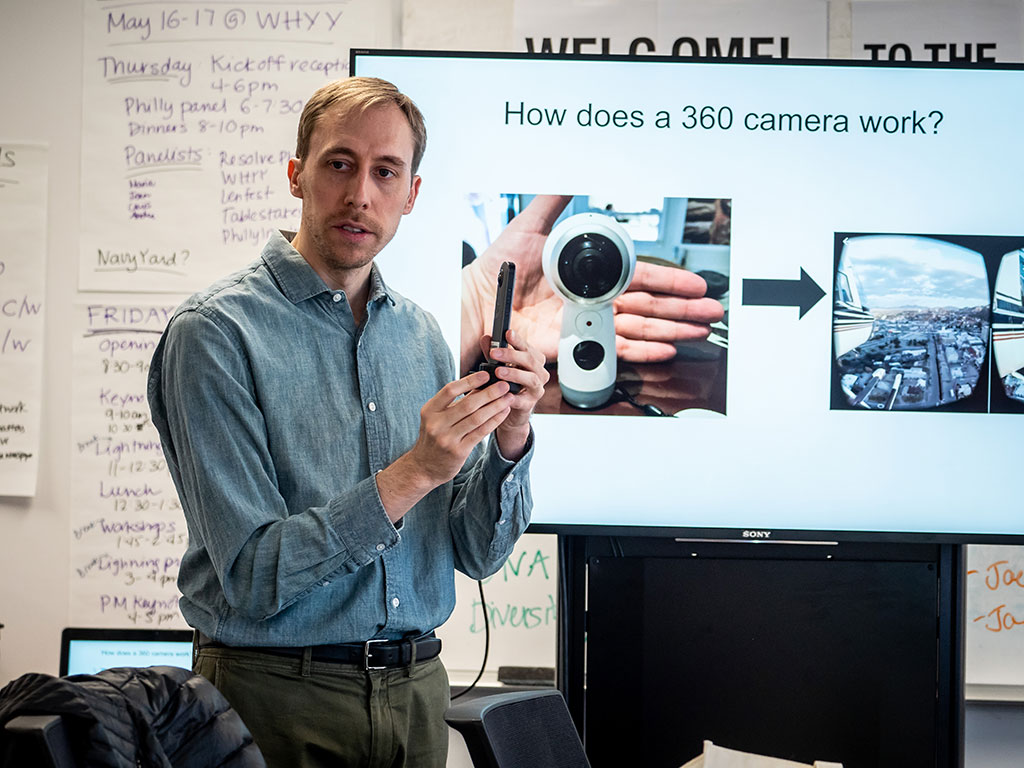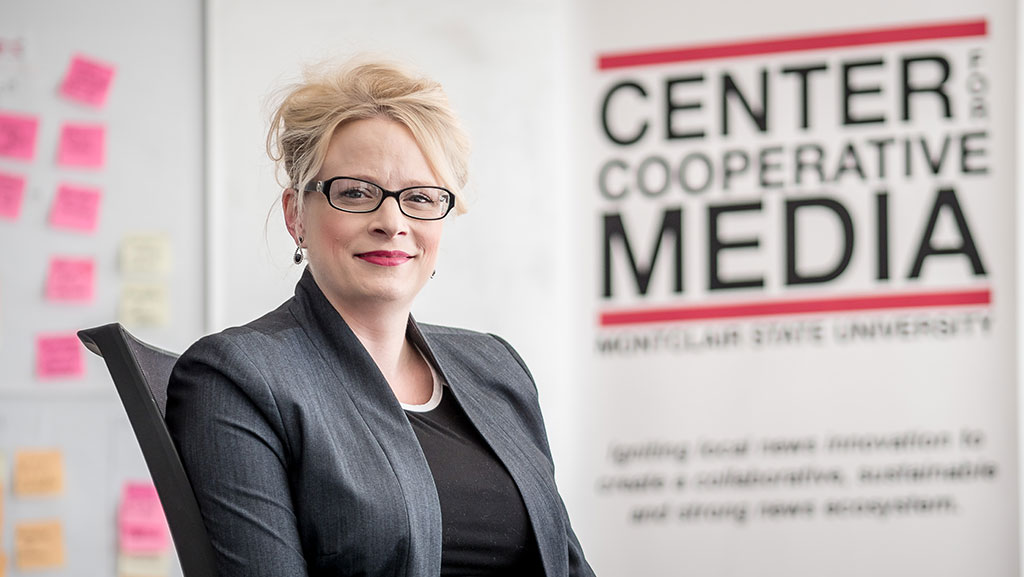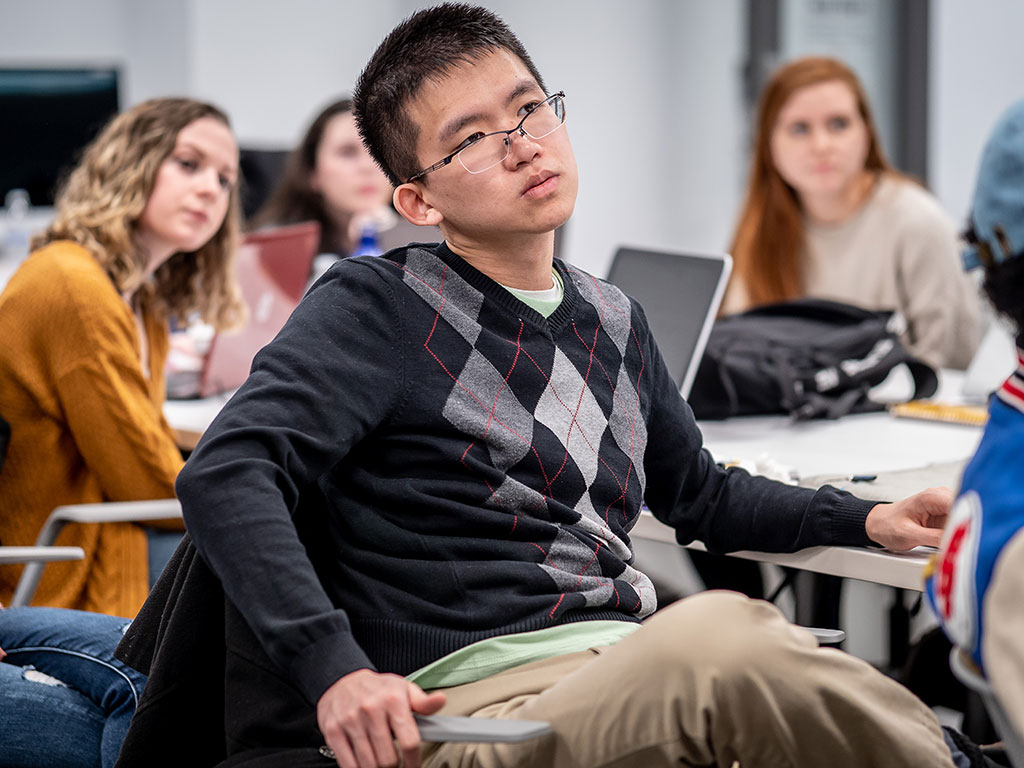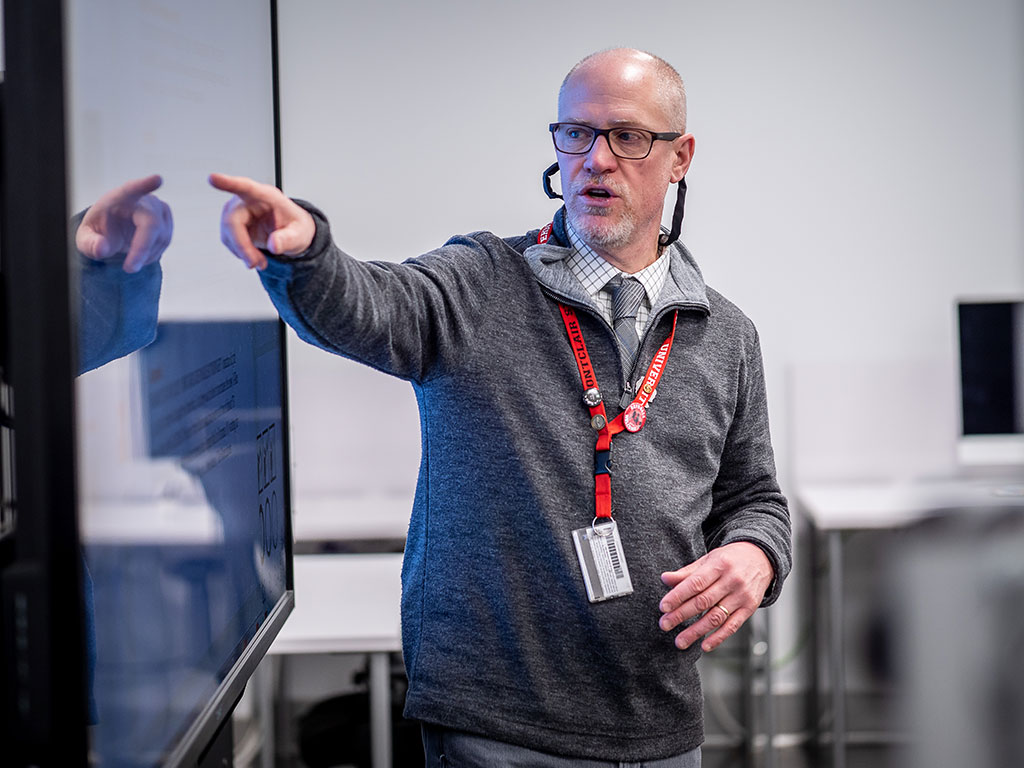
Media’s Changing Landscape
The Center for Cooperative Media is reinventing the ways news is shared and forming partnerships to produce stronger journalism
When it comes to knowing what’s happening in your town, no news is bad news. With no one watching the schools, or local government and zoning board, some communities across the Garden State are being left in the dark in so-called “news deserts.”
“If you gave me 1,000 independent journalists, I could keep them busy full time. I could probably keep 2,000 to 3,000 busy full time,” says Stefanie Murray, director of the University’s Center for Cooperative Media. “There’s so much to write about.”
The Center’s mission is to grow and strengthen local journalism through three main programs. One is its flagship project, the NJ News Commons, a network of 280 media outlets and freelancers across the state, for which the Center provides business coaching, training, some grant funding and networking. The Center also runs a national collaborative journalism program and conducts academic research in different areas of local news.

Some audiences know the Center best for its newsletter, which rounds up the top stories of the day from news sites across the entire state. The NJ News Commons newsletter is free and available to the public at centerforcooperativemedia.org.
The Center regularly runs collaborative news projects in New Jersey, such as Voting Block NJ, an initiative that brought together 25 newsrooms to cover the state’s 2017 gubernatorial election. The effort resulted in more than 70 stories and over two dozen community events, called Political Potlucks, which brought the public into the conversation and reporting process.

“Collaborative journalism can help news organizations produce and provide the kind of news and information that just isn’t possible when everyone is working within their own silos. It can increase diversity, reach and impact,” Murray says.
The Center’s funding comes from the Geraldine R. Dodge Foundation, the John S. and James L. Knight Foundation, the New Jersey Local News Lab Fund of the Community Foundation of New Jersey, the Abrams Foundation and Montclair State University. A new grant from the Democracy Fund provides opportunities for local and independent journalists to visit colleagues around the United States. Those are relationships, Murray says, that allow journalists to work smarter and move more quickly to improve what they are doing.

“We work a lot on business models,” including pay models for online news, Murray says. “We do a lot of training – podcasts, newsletters, and multimedia and graphic design skills this spring alone – and bring in speakers on various topics because the industry is changing so quickly.”
In helping its members push the boundaries of what technology offers at the local level, the Center recently held a workshop on ways to tell a story using 360-degree video. Joe Amditis, associate director, says he constantly keeps “an eye on what’s just over the horizon in terms of the latest local news tools and trends.”
Research Director Sarah Stonbely, meanwhile, is currently focused on a project that will map the local news ecosystems of New Jersey in a way that is more detailed and comprehensive than any other such study conducted to date in the United States.

Beyond New Jersey, the Center has launched a global database for collaborative projects that includes full translations in Spanish and Portuguese. “Part of what makes collaboration powerful for newsrooms is that it enables us to cover stories with wide-ranging impact. This is particularly true for stories that go beyond our borders – immigration, tax shelters, privacy laws, the implications of global tech platforms, misinformation and climate change,” Murray says.
The Center’s work, observes Thomas E. Franklin, assistant professor in multiplatform journalism, “is cutting edge in terms of social media, online tools and research practices.”
Montclair State journalism students benefit from the connection, tapping into the Center’s expertise in training tech-fluent professionals experienced in the latest multimedia tools. “It’s what we teach, what we preach in the classroom,” says Franklin, whose own award-winning reporting, photography and video projects as an independent journalist focus on immigration and border issues.

“It can be a depressing time when you consider what's happening in local journalism,” Murray says. “But it's also a really exciting time, too. The climate for independent journalists in New Jersey is one of opportunity. But it's really hard to make it work.”